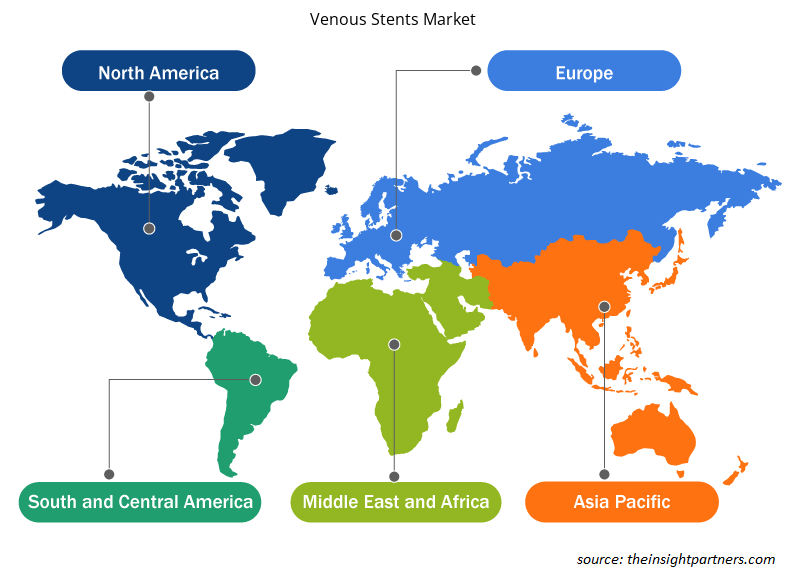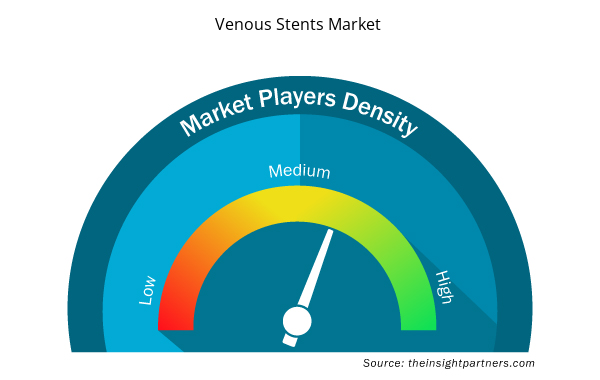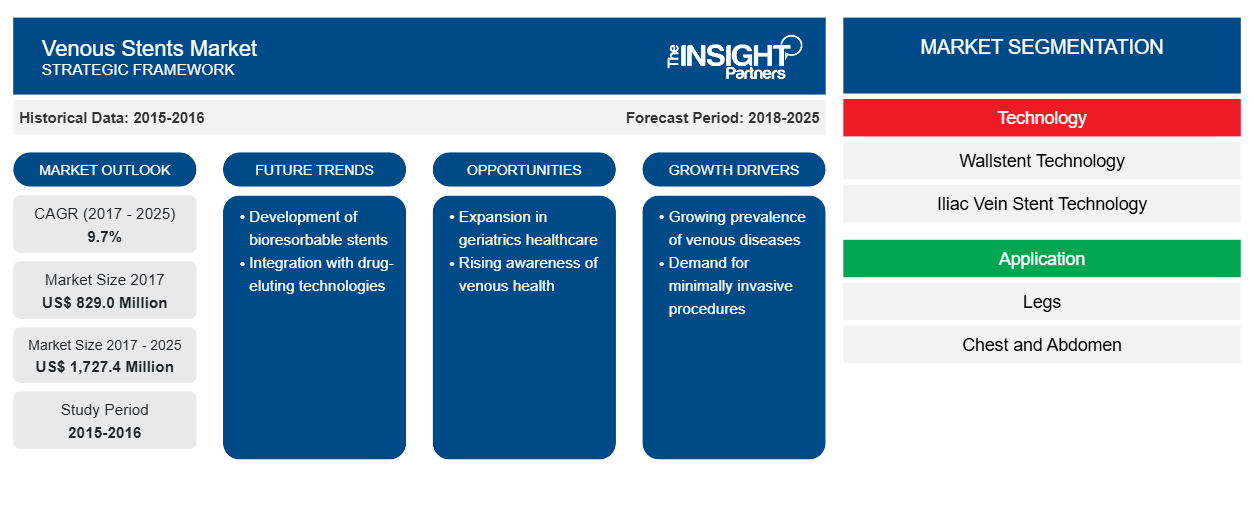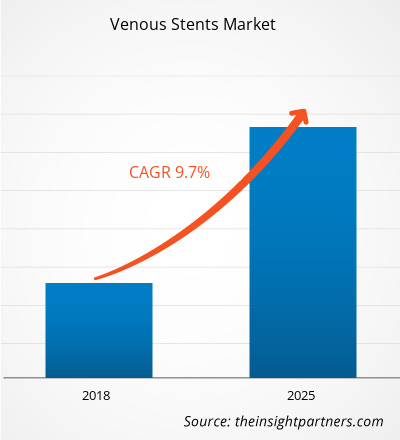[研究报告] 2017年医疗保健市场中的静脉支架价值为 8.29 亿美元,预计到 2025 年将达到 17.274 亿美元;预计 2018 年至 2025 年的复合年增长率为 9.7%。
静脉支架是用金属制成的网状管,可以膨胀以对抗阻塞或狭窄的静脉。这些支架起着支架的作用,有助于保持静脉壁畅通。静脉支架通常放置在腿部、胸部和腹部的中央静脉中。静脉支架用于治疗慢性深静脉血栓形成 (DVT)、血栓后综合征等疾病。医疗保健市场中静脉支架的增长归因于静脉疾病的增加,支架技术的进步和老年人口的增加是市场增长的主要驱动力。然而,市场的增长受到各种因素的制约,例如严格的审批规定和高昂的手术费用。
预计医疗保健市场的静脉支架将在疫情后出现大幅增长。预计医疗保健市场的静脉支架将在疫情后出现大幅增长。由于封锁、旅行禁令和企业倒闭,COVID-19 影响了各国的经济和行业。COVID-19 危机使许多国家的公共卫生系统不堪重负,凸显了对卫生系统可持续投资的强烈需求。随着 COVID-19 疫情的进展,预计医疗保健行业的增长将下降。由于对体外诊断产品的需求增加以及全球研发活动的增加,生命科学领域蓬勃发展。然而,由于手术数量减少以及设备采购推迟或延长,医疗技术和成像领域的销售额正在下降。此外,预计医疗保健专业人员的虚拟咨询将成为疫情后主流的医疗服务模式。随着远程医疗改变医疗服务,数字医疗将在未来几年继续蓬勃发展。此外,临床试验中断以及随后药物上市的延迟也有望为未来完全虚拟试验铺平道路。mRNA 等新技术预计将出现并改变制药行业,预计未来几年市场也将见证更多的垂直整合和合资企业。
定制此报告以满足您的需求
您可以免费定制任何报告,包括本报告的部分内容、国家级分析、Excel 数据包,以及为初创企业和大学提供优惠和折扣
- 获取此报告的关键市场趋势。这个免费样品将包括数据分析,从市场趋势到估计和预测。
市场洞察
静脉支架在医疗保健领域的应用日益广泛,推动静脉支架在医疗保健领域的市场增长
损害静脉的疾病被称为静脉疾病。常见的静脉疾病包括:静脉血栓形成、深静脉血栓形成、静脉淤滞、静脉溃疡、动静脉瘘、血栓后综合征、血栓性静脉炎等。根据约翰霍普金斯大学的数据,美国约有 15% 的人口患有静脉曲张。此外,根据疾病控制和预防中心的数据,每年美国约有 900,000 人(每 1,000 人中有 1-2 人)患有深静脉血栓形成 (DVT)。它还提到,33% 的 DVT 患者会在 10 年内复发 DVT。此外,血栓形成倾向是一种易导致血栓形成的疾病。血栓形成倾向可能源于遗传因素,遗传性血栓形成倾向是由于缺乏遗传因子(如抗凝血酶或蛋白 C)而导致的。美国疾病控制和预防中心估计,美国有 5-8% 的人患有遗传性血栓形成倾向。
由于各地区和各国静脉疾病病例的增加,用于治疗静脉疾病的静脉支架的需求也随之增加,从而促进未来几年的市场增长。
支架技术领域的进步同样促进了静脉支架市场的发展。过去几年,许多业内人士都推出了创新型静脉支架。静脉支架手术的缺陷和技术缺陷导致了新型镍钛合金支架的革命。例如,2018 年 1 月,美敦力公司宣布启动其静脉自膨胀支架系统 Abre 的试验设备豁免 (IDE) 研究。新型 abre 支架专为永久植入髂股静脉而开发。置入 Abre 支架后,支架可提供强度和灵活性的最佳平衡,以施加向外的力并打开静脉。同样,2016 年 11 月,库克医疗宣布启动 VIVO 临床研究,评估用于治疗症状性髂股静脉流出道阻塞的 Zilver Vena 静脉支架的安全性和有效性。因此,许多公司正在扩大其静脉产品组合,以提供用于治疗静脉疾病的全面产品组合。
静脉支架的进步使得静脉疾病的治疗变得简单而准确。这些技术进步很可能在不久的将来推动市场增长。
男性和女性的深静脉血栓 (DVT) 和肺栓塞 (PE) 发病率随着年龄增长而增加。这是由于血栓因子随年龄变化以及大静脉瓣膜松弛所致。根据 NHS 基金会的数据,90-95% 的深静脉血栓或肺栓塞病例发生在 40 岁以上的人群中。此外,癌症、手术或固定、经静脉起搏器、中心静脉导管、感染、肾脏疾病、血栓形成倾向和神经系统疾病引起的腿部轻瘫等慢性疾病在老年人群中更为普遍,所有这些疾病都是静脉血栓栓塞事件的独立预测因素。
全球老年人口不断增加,每个国家都经历了老龄人口的增长。根据联合国《2017 年世界人口展望》的数据,全球 60 岁及以上人口为 9.62 亿,预计到 2050 年将达到 21 亿,到 2100 年将达到 31 亿。报告还提到,欧洲老年人口占比最高,约为 25%。因此,老年人口的增长增加了静脉支架的应用,最终有利于市场增长。
基于技术的见解
从技术角度来看,医疗保健市场中的静脉支架分为壁支架技术和髂静脉支架技术。2017 年,髂静脉支架技术占据静脉支架的最大市场份额,按技术划分为 73.9%。
基于应用的洞察
根据应用,医疗保健市场中的静脉支架分为腿部、胸部和腹部。腿部部分预计在预测期内以 9.6% 的复合年增长率增长。腿部部分的增长主要由于老年人群中深静脉血栓发病率的增加。
基于疾病的见解
就疾病而言,医疗保健市场中的静脉支架分为血栓后综合征、慢性深静脉血栓、梅-瑟纳综合征、血液透析/动静脉瘘等。2017 年,按疾病分类,慢性深静脉血栓形成部分占据静脉支架的最大市场份额,为 30.4%。
医疗保健市场中的静脉支架参与者正在采用产品发布和扩张策略来满足全球不断变化的客户需求,这也使他们能够在全球范围内维护自己的品牌名称。
静脉支架市场区域洞察
Insight Partners 的分析师已详尽解释了预测期内影响静脉支架市场的区域趋势和因素。本节还讨论了北美、欧洲、亚太地区、中东和非洲以及南美和中美洲的静脉支架市场细分和地理位置。

- 获取静脉支架市场的区域特定数据
静脉支架市场报告范围
| 报告属性 | 细节 |
|---|---|
| 2017年市场规模 | 8.29 亿美元 |
| 2025 年市场规模 | 17.274 亿美元 |
| 全球复合年增长率(2017 - 2025) | 9.7% |
| 史料 | 2015-2016 |
| 预测期 | 2018-2025 |
| 涵盖的领域 | 按技术分类
|
| 覆盖地区和国家 | 北美
|
| 市场领导者和主要公司简介 |
|
静脉支架市场参与者密度:了解其对业务动态的影响
静脉支架市场正在快速增长,这得益于终端用户需求的不断增长,而这些需求又源于消费者偏好的不断变化、技术进步以及对产品优势的认识不断提高等因素。随着需求的增加,企业正在扩大其产品范围,进行创新以满足消费者的需求,并利用新兴趋势,从而进一步推动市场增长。
市场参与者密度是指在特定市场或行业内运营的企业或公司的分布情况。它表明在给定市场空间中,相对于其规模或总市场价值,有多少竞争对手(市场参与者)存在。
在静脉支架市场运营的主要公司有:
- 波士顿科学公司
- C. R Bard(被 BD 收购)
- Jotech GMBH(被 Cryolife, Inc. 收购)
- 厨师
- 戈尔公司
免责声明:上面列出的公司没有按照任何特定顺序排列。

- 了解静脉支架市场主要参与者概况
医疗保健市场中的静脉支架 – 按技术分类
- Wallstent 技术,
- 髂静脉支架技术
医疗保健市场中的静脉支架 – 按应用分类
- 腿
- 胸部
- 腹部
医疗保健市场中的静脉支架 – 按疾病分类
- 血栓后综合征,
- 慢性深静脉血栓形成,
- May-Thurner 综合征,
- 血液透析/动静脉瘘,以及
- 其他的
医疗保健市场中的静脉支架 – 按地区划分
北美
- 我们
- 加拿大
- 墨西哥
欧洲
- 法国
- 德国
- 意大利
- 英国
- 西班牙
- 欧洲其他地区
亚太地区 (APAC)
- 中国
- 印度
- 韩国
- 日本
- 澳大利亚
- 亚太地区其他地区
中东和非洲 (MEA)
- 南非
- 沙特阿拉伯
- 阿联酋
- MEA 其他地区
南美洲和中美洲(SCAM)
- 巴西
- 阿根廷
- 其余的骗局
公司简介
- 波士顿科学公司
- C. R Bard(被 BD 收购)
- Jotech GMBH(被 Cryolife, Inc. 收购)
- 厨师
- 戈尔公司
- Optimed Medizinische Instrumente GMBH
- 美敦力
- 德国医疗两合公司
- 康得思
- 历史分析(2 年)、基准年、预测(7 年)及复合年增长率
- PEST 和 SWOT 分析
- 市场规模价值/数量 - 全球、区域、国家
- 行业和竞争格局
- Excel 数据集



Report Coverage
Revenue forecast, Company Analysis, Industry landscape, Growth factors, and Trends

Segment Covered
This text is related
to segments covered.

Regional Scope
North America, Europe, Asia Pacific, Middle East & Africa, South & Central America

Country Scope
This text is related
to country scope.
Trends and growth analysis reports related to Life Sciences : READ MORE..
The List of Companies
- Boston Scientific Corporation
- C. R Bard (acquired by BD)
- Jotech GMBH (acquired by Cryolife, Inc.)
- Cook
- W.L Gore & Associates
- Optimed Medizinische Instrumente GMBH
- Medtronic
- Medica Germany GMBH & Co. KG
- Cordis (acquired by Cardinal Health)
The Insight Partners performs research in 4 major stages: Data Collection & Secondary Research, Primary Research, Data Analysis and Data Triangulation & Final Review.
- Data Collection and Secondary Research:
As a market research and consulting firm operating from a decade, we have published and advised several client across the globe. First step for any study will start with an assessment of currently available data and insights from existing reports. Further, historical and current market information is collected from Investor Presentations, Annual Reports, SEC Filings, etc., and other information related to company’s performance and market positioning are gathered from Paid Databases (Factiva, Hoovers, and Reuters) and various other publications available in public domain.
Several associations trade associates, technical forums, institutes, societies and organization are accessed to gain technical as well as market related insights through their publications such as research papers, blogs and press releases related to the studies are referred to get cues about the market. Further, white papers, journals, magazines, and other news articles published in last 3 years are scrutinized and analyzed to understand the current market trends.
- Primary Research:
The primarily interview analysis comprise of data obtained from industry participants interview and answers to survey questions gathered by in-house primary team.
For primary research, interviews are conducted with industry experts/CEOs/Marketing Managers/VPs/Subject Matter Experts from both demand and supply side to get a 360-degree view of the market. The primary team conducts several interviews based on the complexity of the markets to understand the various market trends and dynamics which makes research more credible and precise.
A typical research interview fulfils the following functions:
- Provides first-hand information on the market size, market trends, growth trends, competitive landscape, and outlook
- Validates and strengthens in-house secondary research findings
- Develops the analysis team’s expertise and market understanding
Primary research involves email interactions and telephone interviews for each market, category, segment, and sub-segment across geographies. The participants who typically take part in such a process include, but are not limited to:
- Industry participants: VPs, business development managers, market intelligence managers and national sales managers
- Outside experts: Valuation experts, research analysts and key opinion leaders specializing in the electronics and semiconductor industry.
Below is the breakup of our primary respondents by company, designation, and region:

Once we receive the confirmation from primary research sources or primary respondents, we finalize the base year market estimation and forecast the data as per the macroeconomic and microeconomic factors assessed during data collection.
- Data Analysis:
Once data is validated through both secondary as well as primary respondents, we finalize the market estimations by hypothesis formulation and factor analysis at regional and country level.
- Macro-Economic Factor Analysis:
We analyse macroeconomic indicators such the gross domestic product (GDP), increase in the demand for goods and services across industries, technological advancement, regional economic growth, governmental policies, the influence of COVID-19, PEST analysis, and other aspects. This analysis aids in setting benchmarks for various nations/regions and approximating market splits. Additionally, the general trend of the aforementioned components aid in determining the market's development possibilities.
- Country Level Data:
Various factors that are especially aligned to the country are taken into account to determine the market size for a certain area and country, including the presence of vendors, such as headquarters and offices, the country's GDP, demand patterns, and industry growth. To comprehend the market dynamics for the nation, a number of growth variables, inhibitors, application areas, and current market trends are researched. The aforementioned elements aid in determining the country's overall market's growth potential.
- Company Profile:
The “Table of Contents” is formulated by listing and analyzing more than 25 - 30 companies operating in the market ecosystem across geographies. However, we profile only 10 companies as a standard practice in our syndicate reports. These 10 companies comprise leading, emerging, and regional players. Nonetheless, our analysis is not restricted to the 10 listed companies, we also analyze other companies present in the market to develop a holistic view and understand the prevailing trends. The “Company Profiles” section in the report covers key facts, business description, products & services, financial information, SWOT analysis, and key developments. The financial information presented is extracted from the annual reports and official documents of the publicly listed companies. Upon collecting the information for the sections of respective companies, we verify them via various primary sources and then compile the data in respective company profiles. The company level information helps us in deriving the base number as well as in forecasting the market size.
- Developing Base Number:
Aggregation of sales statistics (2020-2022) and macro-economic factor, and other secondary and primary research insights are utilized to arrive at base number and related market shares for 2022. The data gaps are identified in this step and relevant market data is analyzed, collected from paid primary interviews or databases. On finalizing the base year market size, forecasts are developed on the basis of macro-economic, industry and market growth factors and company level analysis.
- Data Triangulation and Final Review:
The market findings and base year market size calculations are validated from supply as well as demand side. Demand side validations are based on macro-economic factor analysis and benchmarks for respective regions and countries. In case of supply side validations, revenues of major companies are estimated (in case not available) based on industry benchmark, approximate number of employees, product portfolio, and primary interviews revenues are gathered. Further revenue from target product/service segment is assessed to avoid overshooting of market statistics. In case of heavy deviations between supply and demand side values, all thes steps are repeated to achieve synchronization.
We follow an iterative model, wherein we share our research findings with Subject Matter Experts (SME’s) and Key Opinion Leaders (KOLs) until consensus view of the market is not formulated – this model negates any drastic deviation in the opinions of experts. Only validated and universally acceptable research findings are quoted in our reports.
We have important check points that we use to validate our research findings – which we call – data triangulation, where we validate the information, we generate from secondary sources with primary interviews and then we re-validate with our internal data bases and Subject matter experts. This comprehensive model enables us to deliver high quality, reliable data in shortest possible time.


 获取此报告的免费样本
获取此报告的免费样本